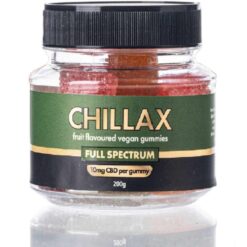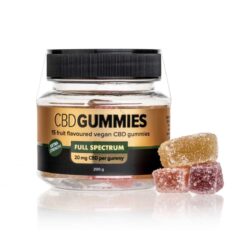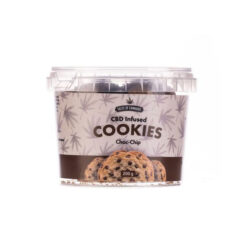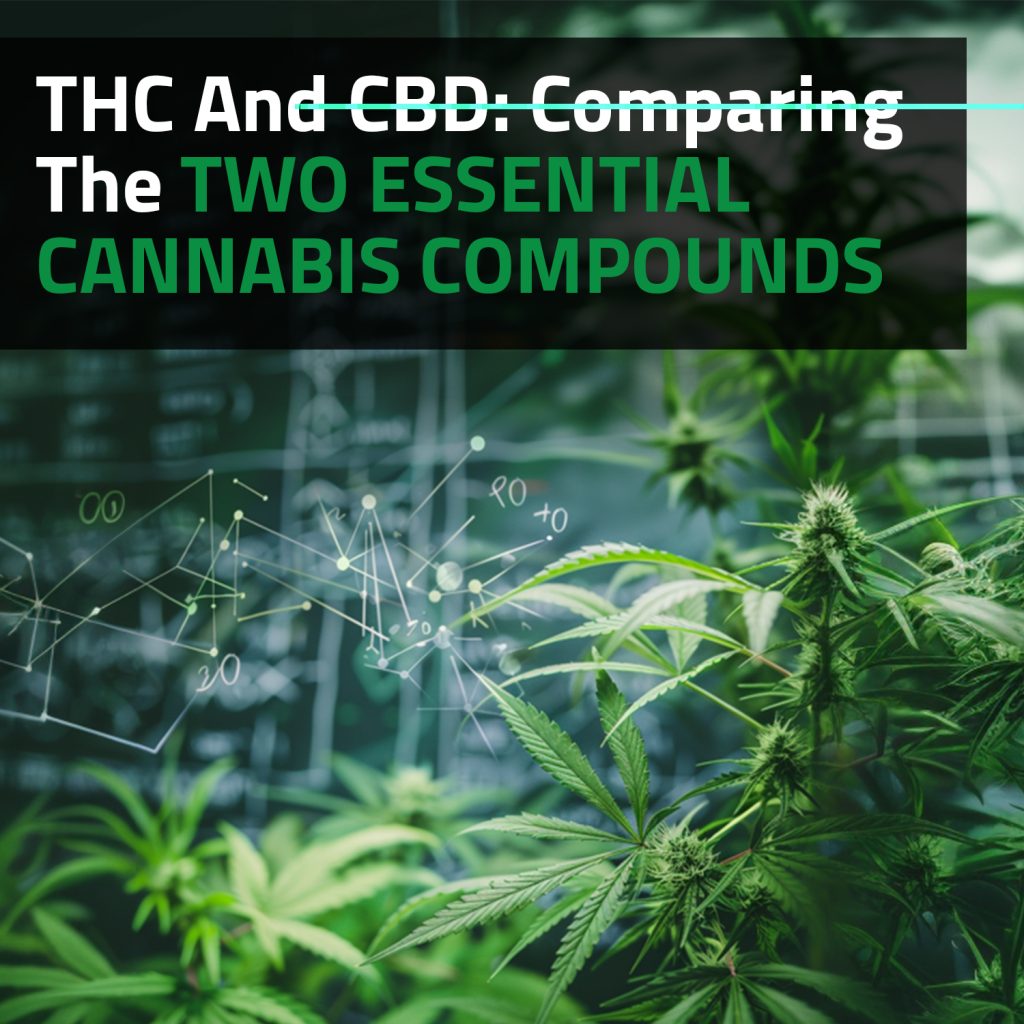Cannabis has gained popularity for both recreational and medicinal use, making it important for users to understand the difference between how its two key components work: tetrahydrocannabinol (THC) and cannabidiol (CBD). By understanding how each of these compounds work, cannabis enthusiasts can gain a better understanding of what they need to look for in the strains and products they buy, as well as what they need to produce the desired effects.
THC: Properties Of Tetrahydrocannabinol
THC (tetrahydrocannabinol) is a natural compound present in cannabis plants. It is most known for producing the psychoactive effects that are associated with using cannabis. When you consume THC, it binds to your brain and central nervous system’s cannabinoid receptors, specifically the CB1 receptors. This changes the release of neurotransmitters, which leads to different psychological and physiological effects. This is better known as the euphoric “high” associated with using cannabis.
However, THC also produces therapeutic effects. It has been proven to provide relief from various medical conditions, including nausea and vomiting, chronic pain, poor appetite, and muscle spasms. Cancer patients who are going through chemotherapy or those who suffer from conditions that reduce appetite can benefit from THC as it reduces nausea and stimulates appetite.
THC has also been studied for its analgesic, or pain-relieving and anti-inflammatory, properties. Its mood-elevating effects are also useful for managing mental health conditions like anxiety and depression.
CBD: Properties Of Cannabidiol
CBD (cannabidiol) is another natural compound present in cannabis plants. CBD is non-psychoactive, so unlike THC, it does not produce a euphoric sensation of being high. CBD interacts with the endocannabinoid system. This system is responsible for regulating a long list of physiological processes, including inflammation, pain sensation, immune response, mood, and more. CBD does not bind to the cannabinoid receptors directly like THC does. It indirectly influences these receptors, allowing it to produce various therapeutic effects.
CBD specifically has gained popularity in the realm of medical cannabis use for its ability to alleviate symptoms of various medical conditions. This includes aiding sleep, reducing inflammation, managing chronic pain, and alleviating symptoms of seizures and epilepsy. CBD is also commonly used to alleviate symptoms associated with anxiety and depression.
CBD And THC: Investigating Key Differences
The most notable difference between CBD and THC is their psychoactivity. THC produces a “high” commonly associated with using cannabis, while CBD does not. This makes CBD a more popular option among medical users who are looking for treatment of symptoms instead of euphoric effects. Conversely, recreational users often choose THC as they seek the euphoric high.
However, both CBD and THC are effective in managing medical conditions. THC is used for stimulating appetite, reducing nausea, managing pain, and alleviating mental health issues. CBD is used for treating epilepsy, alleviating anxiety and depression, and reducing inflammation.
| Features | THC (Tetrahydrocannabinol) | CBD (Cannabidiol) |
| Psychoactivity | Produces characteristic psychoactive “high” | Non-psychoactive, does not produce a “high” |
| Medical use | Nausea reduction, pain relief, control of muscle spasms | Reduction of depression and anxiety, pain management, treatment of epilepsy |
| Binding to cannabinoid receptors | Binds directly to the CB1 and CB2 receptors within the endocannabinoid system | Indirectly influences the cannabinoid receptors and modulates their activity |
| Potential side-effects | Feelings of anxiety/paranoia, short-term memory loss, slower reaction time, and sleepiness | Mostly well-tolerated, mild side-effects include dry mouth, sleepiness, and fatigue |
| Source | Higher concentrations found in cannabis plants | High concentrations found in cannabis and hemp plants |
The effects of THC and CBD will vary based on the dosage you take, the products you use, and your tolerance. Consult with a healthcare professional to find the best option for you. If you are using any other medications, especially if they are chronic, it is important to talk with your doctor about potential interactions and side-effects before using any cannabis products.
The Entourage Effect: The Synergistic Effects Of CBD And THC
According to research, THC and CBD may complement one another’s therapeutic effects by acting together. The entourage effect is the name given to this phenomena. When combined, these substances might provide a wider variety of advantages than when taken apart. Products and strains with a balanced THC to CBD ratio can offer a special kind of comfort for ailments like epilepsy or chronic pain. Since THC and CBD work together with other cannabinoids and terpenes found in the cannabis plant, it may be beneficial to try out full spectrum cannabis products.
How To Choose The Right Cannabis Product
Choosing the right cannabis product requires taking a number of things into account. It is important that you speak with medical marijuana experts to find out what THC to CBD ratio would be best for your needs. Furthermore, being aware of the many medical marijuana delivery options – such as oils, tinctures, edibles, and inhalation techniques – will help you to choose a method that fits your needs and preferences.
Medical marijuana has demonstrated significant potential in reducing the symptoms of neurological illnesses, including neuropathic pain, multiple sclerosis (MS), epilepsy, and Parkinson’s disease. The potential of medical marijuana to relieve pain is one of the main ways that it can be utilised to treat neurological disease symptoms. Because of their analgesic qualities, THC and CBD can both be used to treat chronic pain brought on by diseases like MS or neuropathy. The endocannabinoid system in the body, which is involved in controlling pain perception, is impacted by these substances.
Medical marijuana, and especially CBD, has drawn interest for its possible anti-seizure properties in the case of epilepsy. CBD medication has had a good response in certain forms of epilepsy, including Lennox-Gastaut syndrome and Dravet syndrome, resulting in a decrease in the frequency and intensity of seizures.
Additionally, the use of medicinal marijuana as a treatment for movement disorder symptoms, such those of Parkinson’s disease, has been investigated. Due to their proven neuroprotective qualities, THC and CBD may be able to lessen tremors, alleviate motor complaints, and enhance general motor function.
When trying out cannabis products, be sure to:
- Start with a lower dose and increase it: If you are new to cannabis or do not use it often, start with 5 mg of THC or less. You can try 5 to 15 mg of CBD.
- Try several experimenting with timing to determine what suits you best: It might be ideal for you to take THC and CBD at the same time. You could also choose to use CBD instead of THC.
- Experiment with various delivery strategies: There are different ways to consume CBD and THC, such as tinctures, food products/edibles, vaporisers, gummies, and capsules.
Understanding the distinctions between THC and CBD is essential as cannabis usage and the availability thereof increases. THC and CBD have different effects and therapeutic benefits, and to guarantee safe and efficient use, it is important to speak with medical professionals who can help you to get the results you want.










